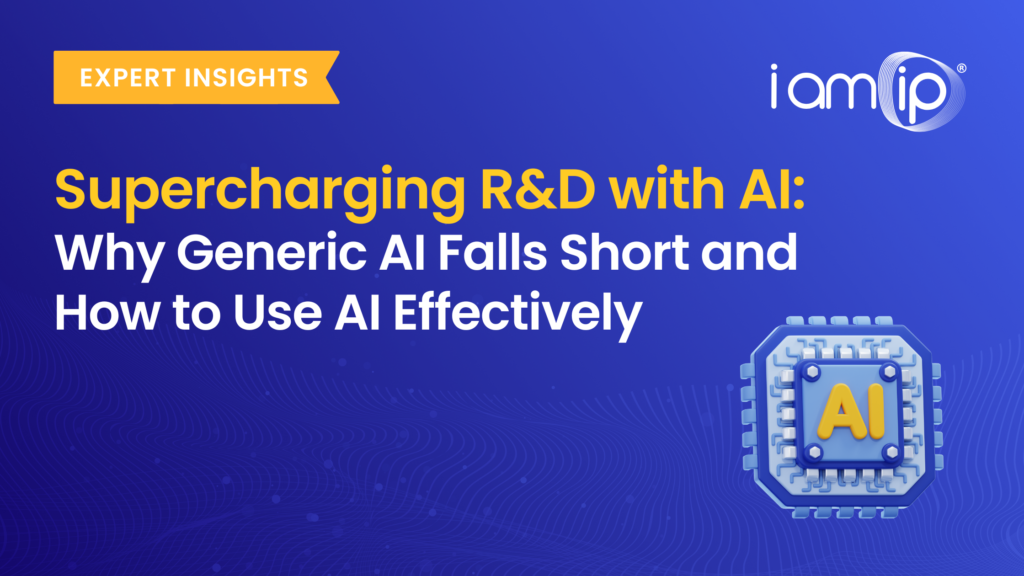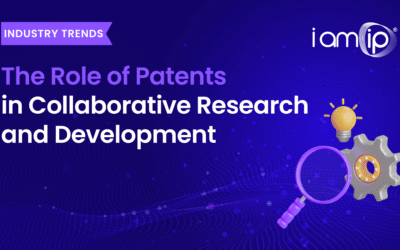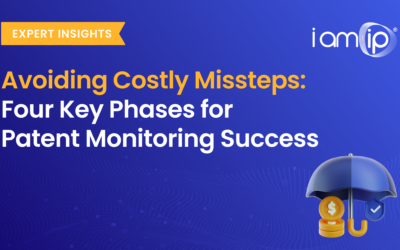
In today’s innovation-driven world, AI can be a game-changer for research and development, but tools like ChatGPT fall short when it comes to providing the specific insights R&D teams need. Generic AI models struggle with advanced tasks like patent analysis and innovation, so using AI effectively requires tailored approaches that truly support your R&D team.
Why Generic AI Models Fail for Patents and Innovation
AI is great at processing vast amounts of information quickly. It can categorize and summarize patent data, making it easier for R&D teams to sift through thousands of documents. However, a generic AI model isn’t smart enough to provide the complex, tailored insights your team needs. Here’s why:
- Lack of Specific Knowledge: Generic AI doesn’t know your company’s products, patents, or how you classify your technology. It can only provide surface-level insights, which often aren’t actionable.
- Incomplete Data: A reliable AI model requires a comprehensive patent database with full texts, native language translations, and all published patents. Anything less will leave gaps in your analysis.
- Missing Context: AI that doesn’t understand your competitive landscape or how your technology stacks up against competitors will deliver generic, unhelpful results.
For AI to be truly useful in patent mapping and R&D, it needs to be trained on your specific data, competitors, and market context.
How to Use AI for Effective Patent Mapping
Instead of relying on a one-size-fits-all AI model, here’s how you can build an AI tool that will boost your R&D department:
- Collect Your Patent Data
Start by compiling your existing patent applications. Most companies already have collections in place. You don’t need hundreds of applications – just 10 to 20 relevant ones can form a strong data set for training.
- Educate the AI on Your Company and Business Context
Feed this data into your AI model and explain how each patent relates to different technologies within your company. This step allows the AI to make more accurate correlations between your patents and your innovation focus areas.
- Incorporate Relevant Competitor Patents
Using a patent database, identify relevant patents from competitors. Add these to your model so that the AI can map competitor technologies to your own, offering more targeted insights.
- Utilize the Model and Empower Your R&D Team
Once the AI model is trained, it becomes a valuable tool for your R&D team. The AI can now:
- Identify top inventors in your industry.
- Visualize patents by technology or tags, making it easier for engineers to focus on innovation.
- Provide deep insights into your competitive landscape.
This tailored approach results in more relevant data and meaningful insights, empowering your engineers to innovate faster and more effectively.
Why AI Can’t Innovate, But Still Has a Role in R&D
While AI can process massive amounts of data, it’s not capable of true innovation. Asking AI to invent something new is like asking it to create ideas from thin air – it simply can’t. AI’s function is to recombine existing information, not invent original solutions.
For instance, AI can list techniques to make a car faster, but it won’t invent a groundbreaking new engine component. Moreover, AI tools often lack specificity, make errors, and provide false or misleading information.
However, AI does have a valuable role in supporting R&D. By helping teams sift through complex data and patents, AI allows engineers to focus on creative, high-value work.
Smart Ways to Use AI in R&D
Instead of relying on AI for direct innovation, use it to complement and enhance your R&D team’s efforts. Here are three ways to use AI effectively:
- Filter Relevant Information
Instead of overwhelming engineers with thousands of documents, AI can sift through vast datasets and identify the 50 most relevant patents or research papers. This saves your team time and helps them focus on truly important data.
- Summarize Patent Texts
Reading through long patent documents can be tedious. AI can highlight and summarize key sections, allowing your engineers to quickly zero in on the information that matters most.
- Identify Market Trends and Competitors
If your company is entering a new market or developing new technology, AI can analyze patents to show what your competitors are doing. Just remember: a generic AI model won’t understand your specific market or competition. That’s why training the AI on your data is critical.
Use AI as a Tool, Not a Creator
AI is a powerful tool that can transform your R&D department – but only if used correctly. Generic models won’t deliver the insights your team needs, so invest in AI tailored to your business and industry. By using AI to filter data, analyze patents, and identify trends, you can empower your R&D team to focus on what they do best, innovating.
Rather than relying on AI for invention, use it to streamline processes, provide relevant insights, and clear the path for true creativity. AI should be a resource that enhances human ingenuity, not replaces it.
insights by: Dimitris Giannoccaro
Search
Categories
- Announcement 6
- Case Study 1
- Expert Insights 7
- IamIP News 4
- Industry Trends 27
- Innovation Index 4
- New Release 9
- Platform News 2
- Press Release 1
- Webinar 13









